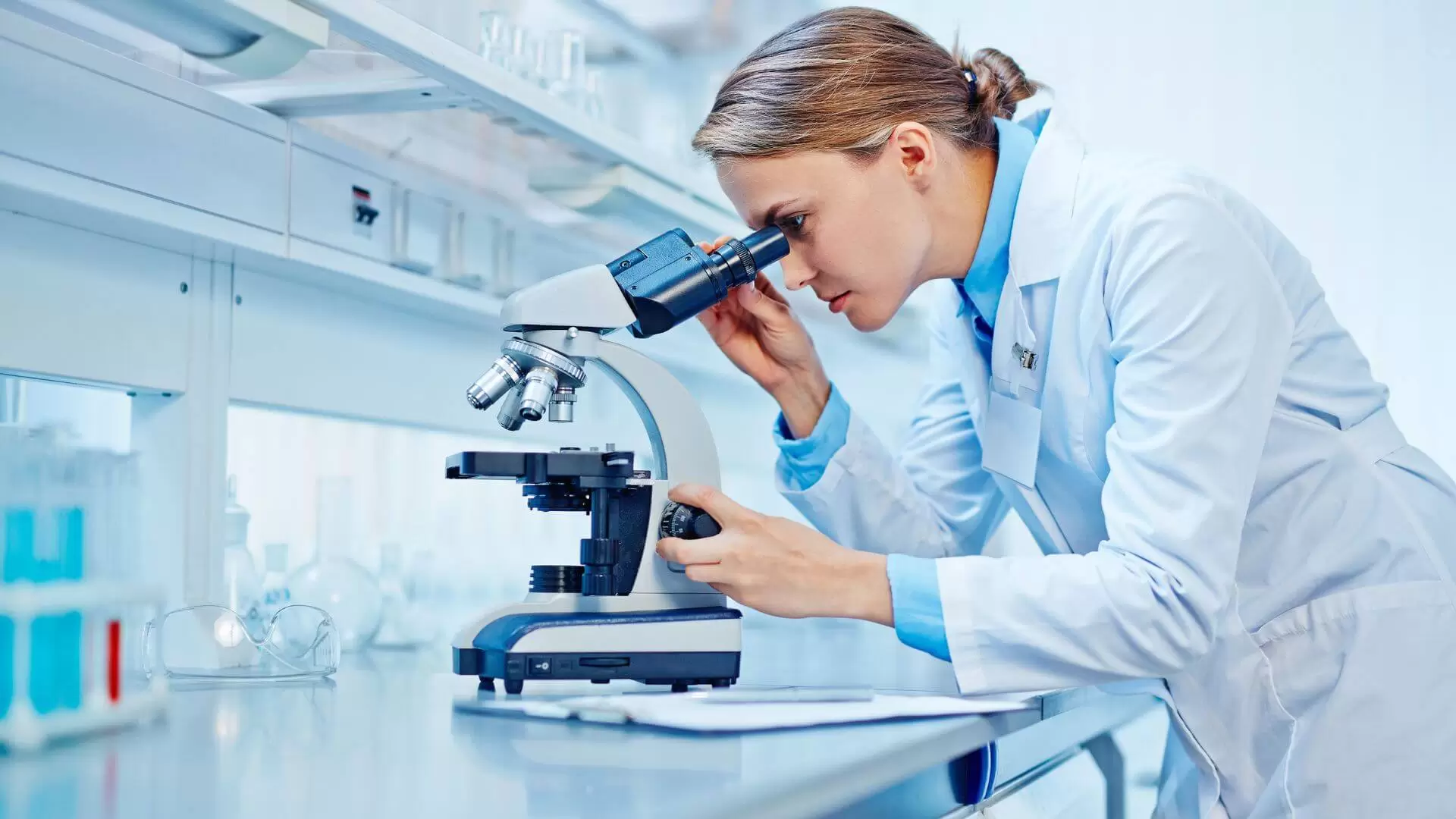The reading of the ‘blocks of life’ by artificial intelligence, was the breakthrough of the year. The magazine also highlights the obtaining of ancient DNA without fossils, from the same soil, with Spanish participation
Science magazine has chosen as a great advance for 2021 a dream pursued for almost fifty years by the scientific community: to know the shape of proteins, the basic bricks on which life is based. Artificial intelligence has achieved this, changing biology and medicine forever. Perhaps for the general public, it is not an impactful discovery, but for science, it is a real revolution. In a matter of minutes and with great precision, researchers will be able to obtain highly relevant information on the proteins involved in different diseases and thus develop better drugs. Also included in the publication’s list of great discoveries is the first-ever discovery of ancient human DNA without fossils, from ground dust,
In addition, they highlight the development of pills to combat Covid-19, seismic observations of Mars, the application of the ‘genetic cut-paste directly within the body and promising advances in the generation of fusion energy.
Artificial intelligence unravels life
Proteins are the basic components of life and their functions, fundamental to almost all biological processes, are directly related to their three-dimensional shape. For nearly 50 years, scientists have struggled to figure out how these structures fold but had barely cracked them. It was hard, expensive, and time-consuming work. This year, two artificial bits of intelligence named AlphaFold (developed by DeepMind, a company bought by Google) and RoseTTA-fold achieved what appears to be an unprecedented scientific revolution., by being able to accurately and quickly (in minutes) predict the structures of proteins, including tens of thousands of the human genome, from the amino acids they contain. The technique, which uses deep learning, promises to speed up scientific discovery enormously. It can be extraordinary for the study of multiple diseases. Many of the structures generated are directly relevant to human health, including proteins associated with lipid metabolism, inflammatory disorders, and cancer cell growth. In addition, the authors of both groups have made their data freely available to researchers, greatly expanding the accessibility to obtaining protein structures.
DNA from the same soil
A team from the Max Planck Institute for Evolutionary Anthropology announced an unprecedented scientific milestone in April. For the first time, researchers had managed to obtain mitochondrial and nuclear DNA from a human species (Neanderthals) without the need for fossil bones, directly from sediments from two caves in the Altai Mountains in Siberia (Denisova and Chagyrscaya), and from the Gallery of Statues in the Major Cave, in Atapuerca. Juan Luis Arsuaga, co-director of the Burgos sites and one of the signatories of the article, described the finding as “historic”. It was not for less, since he supposes that researchers no longer depend on fossils to identify cave dwellers. Just a little ‘dirt’ from the ground. Specifically, at the Cueva de las Estates, nuclear DNA revealed the genetic identity and sex of humans who lived there from 80,000 to 113,000 years ago and suggested that one lineage of Neanderthals replaced several others after a glacial period. which ended 100,000 years ago.
‘Spark’ in fusion energy
Fusion energy, the energy that powers stars, has long been seen as the solution to Earth’s energy problems, but achieving the high temperatures necessary to obtain it is really difficult. Last August, in a result that surprised the researchers themselves, the US National Ignition Facility (NIF) produced a fusion reaction that came tantalizingly close to the ‘balance point ‘ where more energy is produced than the laser energy needed to turn it on.
Pills against Covid-19
A new weapon has joined vaccines in the fight against Covid-19: powerful antiviral pills that prevent symptoms and death if taken early during infection. Manufacturers Pfizer and Merck & Co. announced positive results from clinical trials of their antivirals this fall. Merck’s molnupiravir reduces the risk of hospitalization or death by 30% in high-risk, unvaccinated people. Pfizer’s, PF-07321332, reduces hospitalization by 89% if started within three days of symptoms. The UK approved molnupiravirin in November, and an advisory body in the US has narrowly endorsed it. Regulators are also considering treating Pfizer. More antivirals are being tested and existing generic drugs including fluvoxamine obsessive-compulsive disorder treatment may also be helpful.
Ecstasy against post-traumatic stress
A large scientific trial released in May showed that MDMA, popularly known as ecstasy, significantly reduced symptoms in patients with traumatic stress disorder. The study tested an intensive combination of talk therapy and MDMA, which creates a sense of well-being and empathy that can help people process their traumatic experiences. The results have provoked enthusiasm, but also caution about possible adverse effects. Still, psychedelic research is booming.
Artificial antibodies in infectious diseases
Laboratory-made antibodies, called monoclonal antibodies (mAbs), have revolutionized the treatment of some cancers and autoimmune diseases, but have had limited success against infectious diseases. That changed this year as mAbs achieved success against SARS-CoV-2 and other life-threatening pathogens, including respiratory viruses (RSV), HIV, and malaria parasites.
First look inside Mars
NASA’s InSight probe, which landed on Mars in 2018, managed this year to unravel the planet’s deepest secrets. The hypersensitive seismic station picked up a handful of earthquakes. These readings, combined with estimates of the composition of the interior, helped map the interior of Mars. It turns out that the Martian crust, less than 40 kilometers long, is surprisingly thin even compared to Earth’s. The mantle lacks an insulating underlayer and is shallow, squeezed between the crust and an unusually large liquid core that is more than half the width of the planet. These data are critical to understanding how the Red Planet formed and evolved, and why it is so different from our own world.
Towards a new Physics
An experiment carried out at Fermilab (Fermi National Accelerator Laboratory) in the US confirmed an oddity observed two decades ago. A particle called the muon, a heavier and more unstable ‘cousin’ of electrons, is slightly more magnetic than predicted by the Standard Model of Physics, the great theory that describes one by one all the particles that makeup matter and the four forces that govern them. The discrepancy of 2.5 parts per billion could indicate the existence of mysterious new unknown particles.
The genetic scissors, inside the body
The CRISPR gene-editing tool, known as the ‘genetic scissors’, had its first clinical victory in 2020, when it managed to cure people with inherited blood disorders, sickle cell anemia, and beta-thalassemia. These treatments were carried out in a laboratory plate. This year, scientists have taken it a step further, deploying CRISPR directly into the body. In small studies, the strategy reduced a toxic liver protein and modestly improved vision in people with hereditary blindness.
Embryos growing outside the womb
Israeli biologists March unveiled a method for growing mouse embryos outside the womb for a record time, allowing them to watch mammalian organs and hind limbs form, a process previously hidden inside the mother’s body. The system, which includes rotating bottles filled with nutrients, kept the mouse embryos alive from about day five of development to day 11, about halfway through the animals’ 20-day gestation. The finding comes as other researchers are developing systems to grow human cells in clusters that resemble an early stage of embryo development (blastocysts).




